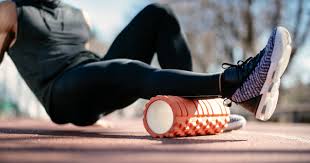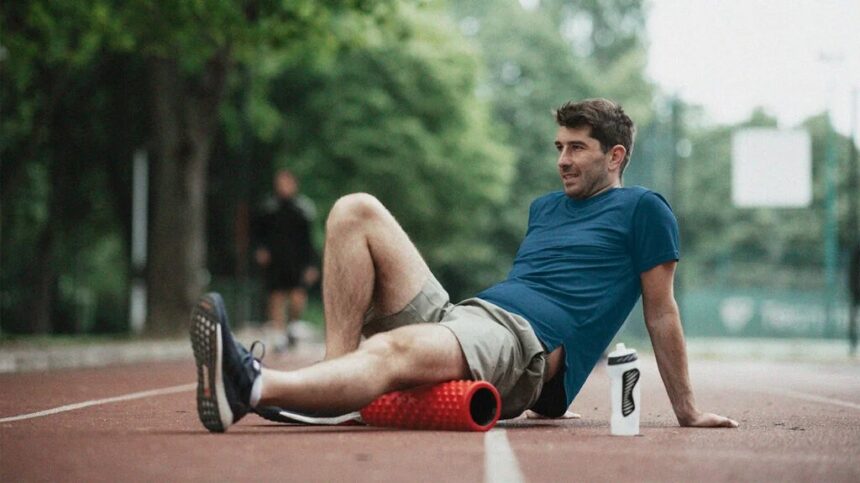Active recovery is a strategic approach to rest that involves low-intensity movement to aid muscle repair, enhance circulation, and maintain flexibility. Unlike complete rest, which involves inactivity, active recovery keeps the body engaged at a lower intensity, reducing muscle soreness and speeding up recovery times. This method is widely used by athletes, fitness enthusiasts, and even individuals recovering from strenuous activities to maintain mobility and prevent stiffness.
The concept revolves around promoting blood flow without putting excessive strain on muscles and joints. Whether it’s walking, stretching, or engaging in light exercises, active recovery ensures that the body remains functional and prepared for upcoming physical challenges.
Why Is Active Recovery Important?
Incorporating active recovery into your routine helps prevent injuries, enhances performance, and reduces delayed onset muscle soreness (DOMS). When muscles experience intense workouts, they develop micro-tears that require repair. Active recovery accelerates this healing process by delivering oxygen and essential nutrients to damaged muscle tissues.
Additionally, active recovery helps flush out metabolic waste such as lactic acid, which can contribute to stiffness and discomfort. By keeping the body moving in a controlled manner, athletes and fitness lovers can reduce downtime and maintain a consistent workout schedule without the risk of overtraining.
Active Recovery vs. Passive Recovery
While passive recovery refers to complete rest with no physical activity, active recovery involves engaging in gentle movements that encourage healing. Passive recovery is sometimes necessary after intense injuries or extreme fatigue, but it can lead to stiffness and prolonged soreness if overused.
Active recovery, on the other hand, keeps muscles warm and engaged, ensuring that they heal without the risk of tightness or loss of mobility. Many professional athletes use active recovery to maintain conditioning while giving their bodies a break from high-intensity training.
Best Active Recovery Activities
There are various ways to incorporate active recovery into your routine. Here are some of the best activities:
1. Walking or Light Jogging
A leisurely walk or a slow jog helps maintain circulation and promotes muscle recovery. This simple activity keeps the joints moving without adding strain.
2. Swimming
Swimming is an excellent active recovery exercise as it provides full-body engagement while being easy on the joints. The buoyancy of water reduces impact, making it an ideal choice for those recovering from intense workouts or injuries.
3. Yoga and Stretching
Yoga and stretching help improve flexibility, reduce muscle tension, and enhance mobility. Light stretching after workouts prevents stiffness and promotes relaxation.
4. Cycling at Low Intensity
Riding a bike at a slow to moderate pace improves blood flow to the legs and keeps the muscles engaged without excessive strain. It is particularly beneficial for runners and endurance athletes.
5. Foam Rolling and Self-Myofascial Release
Foam rolling helps relieve muscle tightness and improve circulation. By applying pressure to specific muscle groups, foam rolling aids in breaking up adhesions and reducing soreness.
When Should You Use Active Recovery?

Active recovery should be incorporated into your fitness regimen after intense workouts, competitions, or strenuous physical activities. It can be used on rest days, post-exercise cooldowns, or even after long periods of sitting to prevent stiffness and improve overall mobility.
Listening to your body is crucial—if you experience extreme fatigue or severe pain, opting for a more restful recovery approach may be necessary. However, for general muscle soreness and maintenance, active recovery is the ideal solution.
The Science Behind Active Recovery
Research suggests that active recovery can significantly reduce muscle soreness and improve performance. A study published in the Journal of Sports Sciences found that athletes who engaged in low-intensity movement post-exercise experienced quicker recovery times than those who opted for passive rest.
Additionally, active recovery has been linked to improved cardiovascular health, better flexibility, and a reduced risk of overuse injuries. The controlled movement helps maintain neuromuscular coordination, ensuring that muscles remain responsive and adaptable to future workouts.
Common Mistakes in Active Recovery
While active recovery is beneficial, some common mistakes can hinder progress:
1. Exercising Too Intensely
Active recovery should be low intensity. Engaging in high-impact activities defeats the purpose and may lead to additional muscle fatigue or injury.
2. Ignoring Recovery Needs
Many athletes underestimate the importance of recovery and push their bodies too hard. Balancing active recovery with proper nutrition, hydration, and sleep is essential for optimal performance.
3. Skipping Warm-ups and Cool-downs
Even during active recovery sessions, warming up and cooling down are crucial to prevent injuries and ensure smooth transitions in physical activity.
How to Incorporate Active Recovery Into Your Routine
Adding active recovery to your fitness schedule is simple. Here’s how you can integrate it effectively:
- After workouts: Use light stretching or yoga to aid muscle relaxation.
- On rest days: go for a walk, cycle, or perform low-impact exercises.
- During work breaks, stretching or walking for a few minutes can prevent stiffness and improve circulation.
- Post-Competition Recovery: Engage in light swimming or jogging to promote blood flow and muscle healing.
Final Thoughts
Active recovery is a game-changer when it comes to preventing injuries and enhancing performance. By incorporating gentle movement into your routine, you can speed up recovery, reduce muscle soreness, and maintain peak fitness levels. Whether you’re an athlete, a gymgoer, or someone who enjoys regular physical activity, making active recovery a priority will help you achieve long-term success without the setbacks of overtraining or injury.
Next time you feel sore or fatigued, try active recovery instead of complete rest—you’ll be surprised at how much better your body feels!
